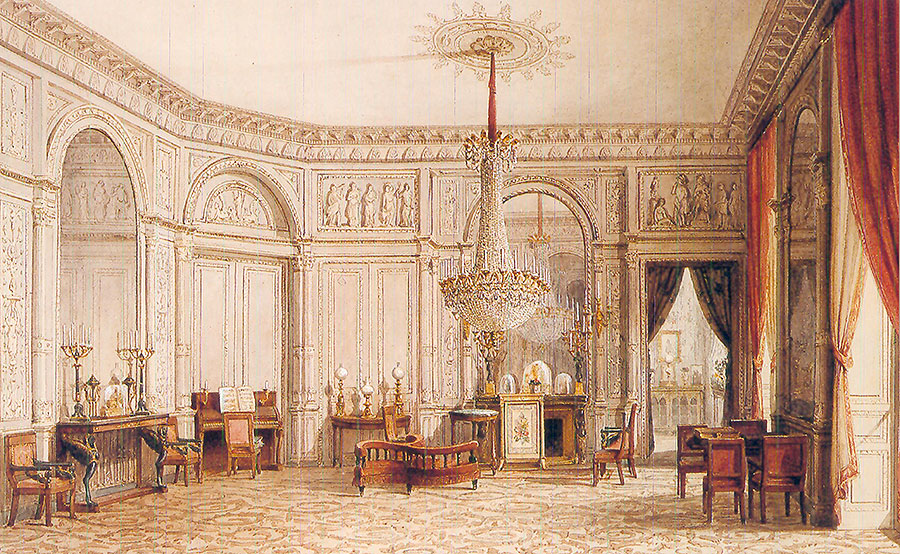


If you want to use this picture, please contact our library

This watercolour shows the drawing room repainted in white when the mansion was the property of the Roche des Escures family.
This drawing room is one of the very few surviving examples of interior decoration during the Directoire (1795-1799) and Consulat (1799-1804) periods. Its installation in the museum in 1939 respected the room’s original proportions and arrangement. Except for the absence of the daylight provided by the two windows, replaced here by artificial lighting, the drawing room is as it was on the first floor of the mansion at 16 Place Vendôme.
The room’s decoration is symmetrically organised around the central axis created by the wide, arched mantel mirror. The room’s three other mirrors are extended to the floor by mirrors faced with an openwork wooden balustrade. Framed either by double doors or by the two windows, the decoration is complemented by Pompeian-inspired panels alternating with slender columns and antique-style bas-reliefs above the doors.
The blue Turquin marble fireplace is framed by two gilt and patinated bronze sphinx caryatids. In inventories, the fireplace is listed as an integral part of the building, not as a piece of removable furniture. It played a central role in the furnishing of contemporary drawing rooms, dictating the organisation of the panelling, mantel mirror and console table on the opposite wall. This marble and gilt and patinated bronze fireplace is particularly luxurious. The single-legged sphinxes supporting the mantel have patinated bronze busts draped with a large gilt bronze acanthus leaf and a patinated lion’s paw resting on a gilt bronze base. These single-legged sphinxes are comparable to those supporting a console table by Thomire and above all the sphinxes designed by Wailly for the fireplace of the foyer of the Théâtre de l’Odéon in Paris, still in situ.